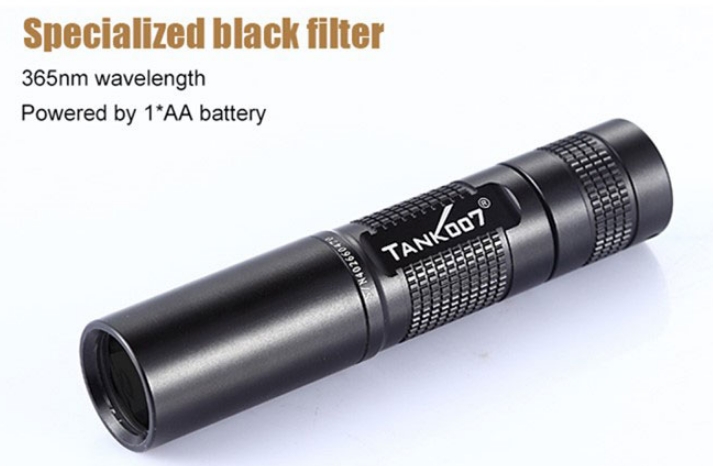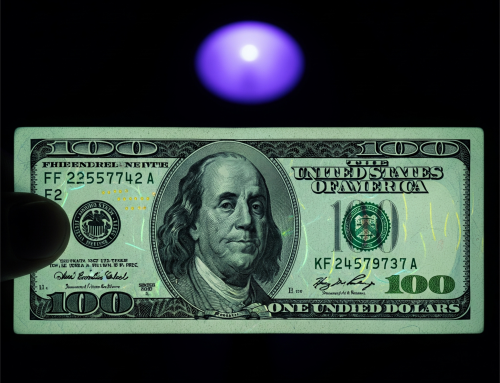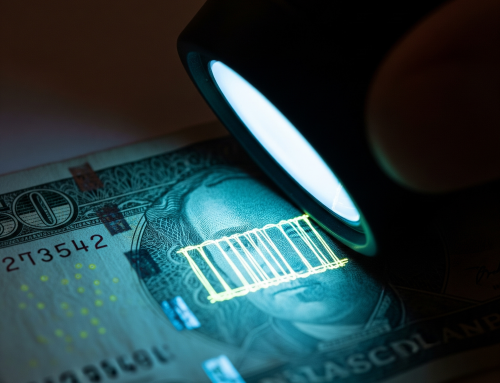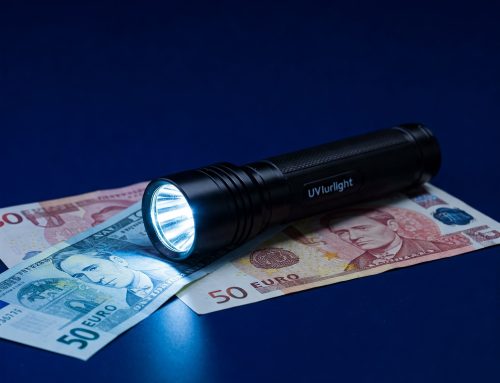Counterfeit currency is a significant global issue that affects economies and businesses. Detecting fake notes is crucial for minimizing losses, and one of the most effective tools for this purpose is the UV flashlight.
1. Working Principle of UV Flashlights in Currency Detection
UV flashlights emit ultraviolet (UV) light, typically in the 365nm to 395nm wavelength range. Many genuine currencies have embedded security features that fluoresce under UV light. Counterfeit notes often lack these features or replicate them poorly, making them easily detectable.

| Aspect | Details |
|---|---|
| Wavelength | 365nm to 395nm is ideal for detecting fluorescent materials. |
| Fluorescent Features | Embedded fibers, watermarks, and hidden patterns glow under UV light. |
| Non-Fluorescent Areas | Genuine notes may also have dark areas that absorb UV light. |
2. Steps to Detect Counterfeit Currency Using a UV Flashlight
Follow these steps to effectively use a UV flashlight for currency verification:
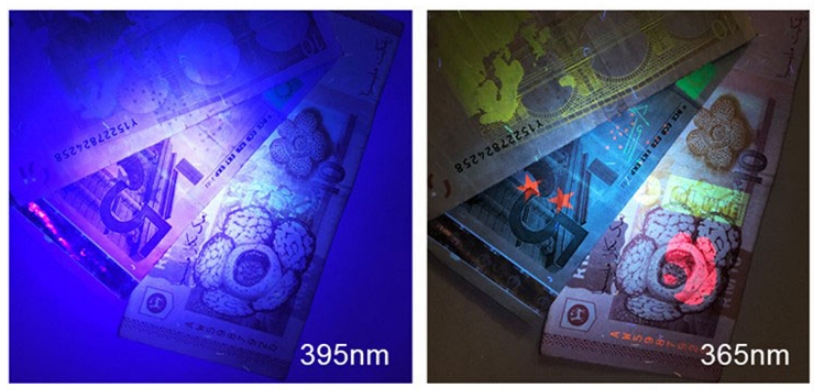
- Prepare the Environment
- Ensure the room is dimly lit for better visibility of UV effects.
- Inspect the Note
- Hold the currency under the UV flashlight. Look for glowing features like fibers, strips, or symbols.
- Verify Key Features
- Cross-check fluorescent marks against official designs. Refer to central bank guides for your currency.
- Compare with a Genuine Note
- Place a genuine note side-by-side with the suspected counterfeit to spot differences.
- Check for Absence of Glow
- In areas that are meant to absorb UV light (non-fluorescent zones), ensure there’s no unintended glow.
3. Case Study: Using UV Flashlights in Real-Life Currency Detection
Scenario: Retail Store Detects Fake Notes
A retail store employee in New York noticed suspicious $100 bills during a busy shopping season. Using a UV flashlight:
- The genuine note displayed fluorescent strips and fibers matching the Federal Reserve guidelines.
- The fake note lacked these features and had an uneven glow in areas meant to remain dark.
Outcome:
The counterfeit notes were identified and reported, saving the store over $1,000 in potential losses.
4. Comparison Table: Genuine vs. Counterfeit Features
| Feature | Genuine Currency | Counterfeit Currency |
|---|---|---|
| Fluorescent Fibers | Present and evenly distributed | Absent or unevenly placed |
| Security Strips | Embedded and glows under UV light | Often missing or poorly replicated |
| Symbols and Patterns | Glow matches the official design | Irregular glow or mismatched patterns |
| Non-Fluorescent Areas | Properly absorb UV light, remaining dark | May glow unintentionally due to poor materials |
5. Benefits of Using UV Flashlights for Counterfeit Detection
- Accuracy: Identifies security features invisible to the naked eye.
- Portability: Compact and easy to carry, ideal for retail, banking, and field inspections.
- Cost-Effectiveness: Affordable compared to other detection equipment.
- Versatility: Can also be used for other applications, such as document authentication and forensic analysis.
Conclusion
UV flashlights are an indispensable tool in the fight against counterfeit currency. By leveraging their ability to reveal hidden security features, businesses and individuals can protect themselves from fraudulent transactions.
Whether you’re a retailer, banker, or consumer, investing in a high-quality UV flashlight is a simple yet effective step towards financial security.
